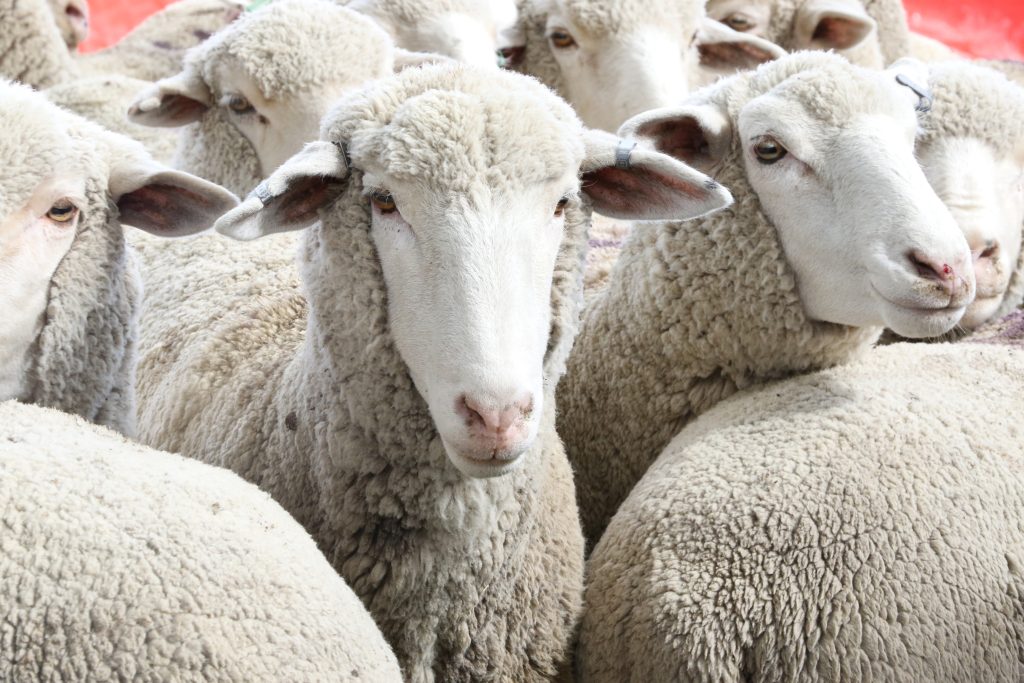Sheep Genetics: SGUSA advances nation’s sheep industry through genetic technology

The American Sheep Industry Association’s (ASI) August 2024 edition of Sheep Industry News is dedicated to focusing on ways to advance the sheep industry, marking four consecutive years of a genetics-themed issue.
“ASI believes genetic improvement is one of the major cornerstones to help producer profitability and keep the American sheep industry competitive in our marketplace by providing consumers with a high-quality product at a price which is sustainable up and down the value chain,” states ASI President Brad Boner.
He adds, “Countries which import the most lamb into the U.S. market are already keenly focused on genetic improvement and have made advances in recent years which have made their product more acceptable to the American consumer than it was 10 years ago.”
Pushing the industry forward
In 2020, Sheep Genetics USA (SGUSA) was started by industry leaders who saw the need to utilize resources to progress sheep genetics in the American sheep industry.
The SGUSA Board of Directors has been making a difference in the sheep industry and has focused on improving genetics of the American flock.
Founding members of SGUSA who still serve on the board today include Tom Boyer, Ben Lehfeldt and Rusty Burgett.
Karissa Isaacs is currently serving as chair of SGUSA in her second year on the board, and joining the board for his first term is David Ollila.
Joining the board of directors is seven different action committees, which represent different roles within the sheep industry.
SGUSA is collaborating on Genetics, Environment, Management and Society (GEMS) research projects.
A key element of Sheep GEMS is to work in partnership with sheep producers, particularly those engaged in the National Sheep Improvement Program (NSIP).
According to SGUSA, “Genetic analysis is an increasingly important and common tool in guiding animal breeding, and with the use of genomic information, a growing number of desired traits for livestock which boost flock health and producer profitability are being incorporated into breeding programs.”
Sheep GEMS update
Sheep GEMS, NSIP members and other sheep industry organizations have been working to create the building blocks for the implementation of genomic selection in the American sheep industry.
Sheep GEMS provided an update in research related to genomic predictions, describing the practical aspects for application of genomic selection in the industry.
Genomic selection is the process by which genomically-enhanced estimated breeding values (GEBVs) are used for selection of individuals to become the parents of the next generation, according to the ASI article.
GEBVs are different from estimated breeding values (EBVs), and GEBVs tend to be more accurate than EBVs, especially for younger animals.
This is because GEBVs are based on genomic relationships among animals instead of only pedigree-based relationships which tend to be less accurate, more incomplete and contain more errors.
However, the interpretation of GEBVs is the same – both estimate the genetic merit of an animal for a given trait.
Still, obtaining and using more accurate GEBVs allows for quicker genetic improvement because selection decisions become more accurate.
Collecting data
One of the key goals of Sheep GEMS has been to develop strategies for incorporating genomic information in EBVs.
Many factors influence the accuracy of GEBVs. First and foremost is the size of the reference population, which is the number of individuals with both genomic data and phenotypic records for the traits of interest, according to the article.
“The larger the reference population, the more accurate the GEBVs. As a starting point, our target is at least 3,000 animals per breed before GEBVs can be reliably provided,” the article explains. “So far, only the Katahdin breed at 12,500 animals has met this target, while Polypay with 1,270 animals, Rambouillet with 1,250 animals and Suffolk with 520 animals are still working to get to this goal in their respective reference populations.”
Building a stronger reference population represents more flocks. Currently there are 100 Katahdin, 30 Polypay, 17 Rambouillet and seven Suffolk flocks contributing to the reference populations.
According to Sheep GEMS, collecting phenotypic records for various traits of interest is as important as genotyping animals, and linking genotypes to the performance of animals can improve the ability to predict their genetic merit, particularly for traits measured later in life, expressed in only one sex or difficult to assess.
Many such traits reflect the robustness and resilience of flocks, including ewe longevity, lamb survival and udder health, which are the focus of Sheep GEMS.
Genomic selection has already been implemented in the Katahdin breed with Katahdin producers benefiting from using more accurate GEBVs in their selection decisions.
Sheep GEMS is now in the process of performing genomic analyses for various novel indicators of robustness and resilience.
The article concludes these traits are heritable, influenced by many important genes and can be predicted with greater accuracy when large enough reference populations are available.
“The opportunities from incorporating genomic information in genetic predictions are tremendous,” Sheep GEMS states. “However, to be realized, we need to continue building robust reference populations in more American sheep breeds.”
Melissa Anderson is the editor of the Wyoming Livestock Roundup. Send comments on this article to roundup@wylr.net.





